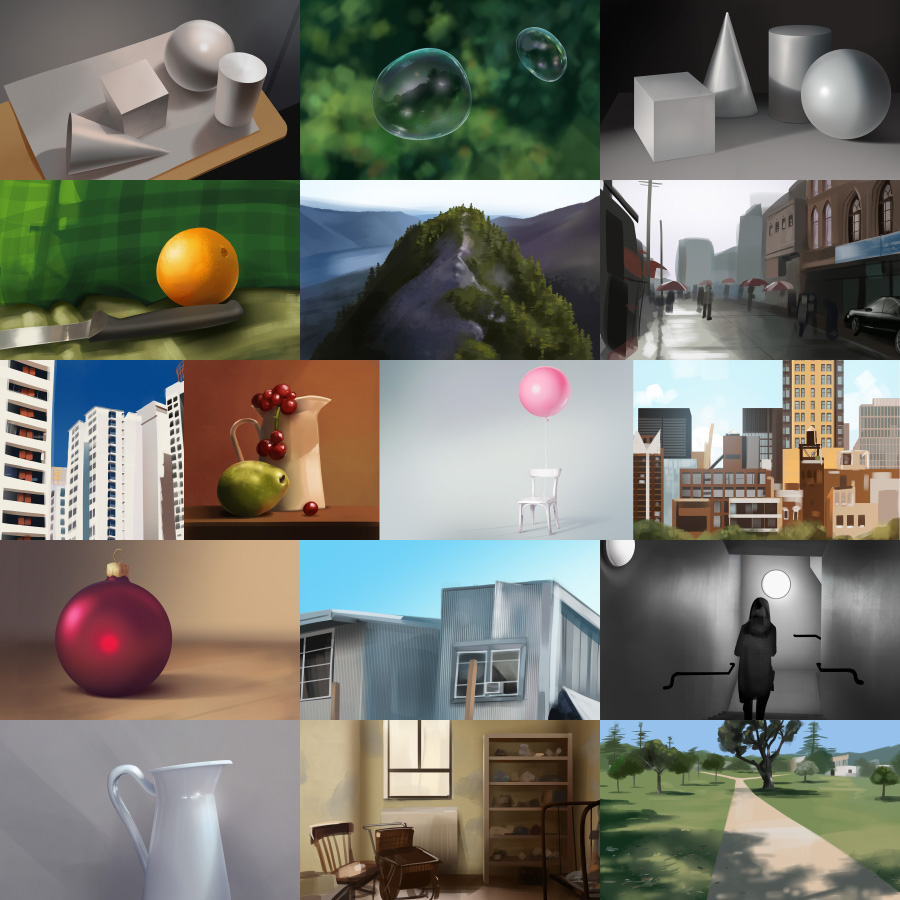I've been doing at least one daily practice study every single day, and this week I reached a two year long streak! On average I've done 27 minutes and 3.8 drawings a day. I thought I might make a post to share with you all my method of doing it and sticking to it.

Daily art practice and working on my weaknesses was something I always wished I could do and I'd try it in short bursts, but was never able to stick to it for any amount of time.
Until I discovered a program called Anki.
Anki is a flashcard program that uses spaced repetition. It's an incredibly efficient way to memorize a whole lot of information (like, if you are studying medicine or learning vocab in a foreign language.) Essentially, every time you get a flashcard right the amount of time before ANki makes you review it again goes up and the difficult cards get seen more often.
Instead, I decided to try using Anki to make decks of reference images of things I wanted to practice drawing and then I challenged myself to do at least one drawing a day (although it's effectively two as I try do to one to improve my anatomy drawing and another related to backgrounds/environments.
Anki turned out to have a whole bunch of big advantages.
1) It tracks your time and amount of cards studied and gives you graphs and statistics. This is a great way of keeping myself accountable to drawing every day because if I miss a day it'll permanently be recorded under the days studied % stat.
Also I found that without Anki, doing studies of things I'm bad at was demotivating since I was struggling through the process of drawing something I’m not good at and it felt like that time was wasted. But with Anki, that time gets recorded and increasing the total hours spent/number of reviews gamifies it a bit.

2) Anki manages my cards so that I can do more intensive practice on specific things but also keep practicing everything else. For example, if I decide that the thing I really need to improve most right now is drawing cars, I can add a whole bunch of car images and Anki will mostly show me cars to draw, but all the clouds I wanted to practice earlier still pop up occasionally as the cards do repeat themselves. Also, I can mark cards as hard or fail them if I’m struggling with them and feel I need to practice that same drawing again.
3) Anki makes it super convenient to start practicing. Removing as many barriers as possible is essential for being able to stick to making something an every day habit. I don’t have to think at all about what I’m going to draw, I just open a blank photoshop file and then hit study and Anki gives me something to draw. Of course, I do need to put time aside every now and then to add more images into as they start to run out but it’s not an extra thing I need to think about every single day.
This convenience and ease of starting is the key to sticking to it every day. I set my goal really low, I just need to do one mandatory drawing and I’m done for the day. There’s no minimum time limit, it could even be a 20 second scribble. I’ve done bare minimum half-assed studies many days, either because I was busy, on holiday or just unmotivated or lazy. However, the hardest part is just sitting down and getting started. Often, telling myself that I only need to spend a couple minutes and then I’m done with Anki for the day if I want leads me to keep drawing for 15 minutes, 30 minutes or even an hour longer than I thought I would. But if I don’t, that’s fine too.
Another convenience with Anki is you can create an account at ankiweb.net and sync it to there. That means I can do Ankis anywhere as long as I have a device with a web broswer and internet. I used ankiweb on my phone and did 1 minute sketches on paper when I was on holiday in Hong Kong.

Last year I used Anki to tackle a major skill I needed to improve. As I used to only using flash to draw backgrounds since 2011, I mostly stuck to using only that and rarely left my comfort zone to paint BGs instead in Photoshop. I realised that I needed to force myself to spend time painting in Photoshop. So I made an anki deck of images to do 30 minute timed studies of and set a new years resolution to do 240 of them. There was only one rule, I could only do a maximum of two a day so that I forced myself to spread them out somewhat over the year.
I ended up only making it to 200 (I got an in-studio job at the end of the year as a background artist and things got hectic), but it was a huge success and it made me a lot more comfortable in photoshop. I was certainly grateful I’d done it as I was a lot more prepared for the work I did on One Week Ultimate Werewolf, which involved painting detailed rooms entirely in Photoshop.

I hope you found that interesting! If there’s any interest I could make another post about specific settings in Anki and other study tips. And, if you stay up to date with more of my stuff, my Twitter and Instagram are the places to go.
Tyler
thats really great, thanks for the share!